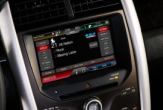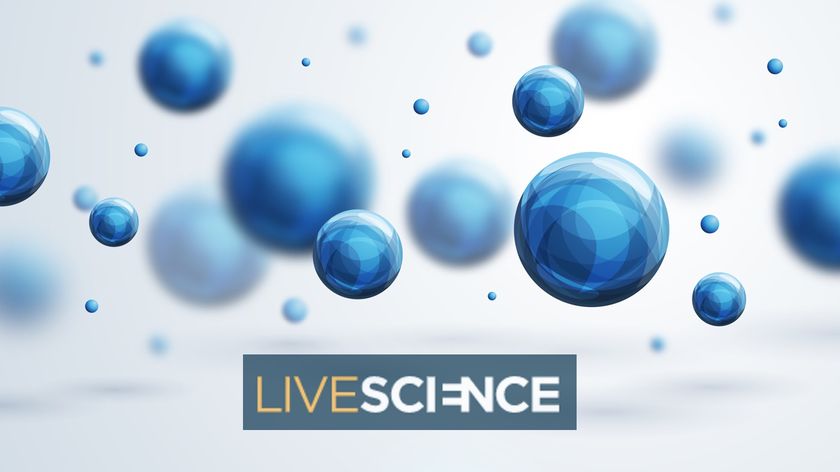
Later this year, Ford automobiles will let you access the Internet and take your digital life on the road. Safety experts worry, however, that all the distractions could be dangerous.
An enhancement of the company's popular voice-activated in-car communications system, Ford's second-generation SYNC will become the operating system that manages the entire driver interface, which will be called MyFord Touch.
All functions will become voice-controlled, including entertainment – AM/FM, radio, satellite, HD, CD, MP3 – climate control, phone, and navigation.
Scheduled to be available in select vehicles later this year, MyFord Touch will harness the power of your smartphone to access and control other applications. You'll have the ability to listen to streaming music from the online music service Pandora, stay in touch with the latest news, talk and sports via Stitcher, and check out the latest Twitter messages, or "tweets," from your friends through OpenBeak.
All without taking your hands off the wheel or your eyes off the road.
How will it work?
The Internet connection that will make all this possible will be supplied by drivers' smartphones. SYNC connects with smartphones via Bluetooth, Wi-Fi or USB. Ford engineers have created a SYNC application programming interface (API) that allows developers to enable their applications to be controlled in your car by SYNC. Pandora, Stitcher and OpenBeak were the first to use the new SYNC API.
Sign up for the Live Science daily newsletter now
Get the world’s most fascinating discoveries delivered straight to your inbox.
Pandora, with more than 40 million users, is the world's most popular Internet radio service. It streams music from "stations" that the user creates, relying on algorithms to select songs similar to others you've given a "thumbs up" to.
Stitcher lets users create personalized Internet radio stations with news, talk and entertainment programming.
OpenBeak is a mobile client for posting updates and reading messages on Twitter, a microblogging service. It currently works only with Blackberries. But Julius Marchwicki, Ford's product manager for mobile application connectivity, told TechNewsDaily that the company was currently looking to add additional clients for other smartphone operating systems.
A driver will access these applications using voice commands and steering wheel controls. SYNC was built using Microsoft's Windows Embedded Auto software platform. The company Nuance, better known for its Dragon Naturally Speaking speech recognition program for computers, provides the technology for SYNC's voice-recognition of commands and the text-to-speech read back of messages or tweets in SYNC's signature mellifluous voice.
What about posting tweets? So far it's a one-way street, Ford's Marchwicki said. You can receive messages, but you can't send them.
"We're currently examining voice-to-text, but the technology is not quite ready for prime time," Marchwicki said. "You'll be able to hear your [Twitter] timeline, your friends' timelines and direct messages." Drivers can rebroadcast Twitter messages, or "retweet," using controls on the steering wheel.
The second-generation SYNC recognizes more than 10,000 commands, including Pandora and Stitcher staples such as "Thumb up this song" and "Launch Stitcher and play station technology."
Pandora, Stitcher and OpenBeak are just the beginning, Marchwicki said.
"We hope to see a new category of applications using data from the vehicle itself," he said.
An application that knows your windshield wipers are on and senses it's raining, for example, could send that road condition information to a traffic web site. What you won't see, Marchwicki added, is a Ford app store. SYNC-enabled applications will be available through traditional channels such as Android Marketplace. "As a company, we want to be an enabler, not a developer."
MyFord Touch with the second-generation SYNC will eventually be rolled out across the entire Ford-Mercury-Lincoln stable. Pricing has not been determined.
Is it safe?
Because SYNC technology does away with fumbling for the phone and allows drivers to keep their eyes on the road, Ford believes it can help make highways safer. But not everyone agrees.
"These devices do not increase safety," said Robert Sinclair Jr., AAA New York's manager of media relations. "The biggest distraction by far is the cognitive. [Drivers] don't focus on the road, their mind is distracted. Driving in and of itself is multitasking."
Studies have shown that text messaging while driving is extremely dangerous. Driving while talking on a cell phone is as distracting as driving drunk, research in driving simulators at the University of Utah have found.
Even hand-free mobile phone conversations are more dangerous than conversing with a passenger, scientists say, in part because talking to someone who is not in the car requires greater concentration to make up for the lack of visual cues and to avoid awkward silent moments. Plus, a passenger is more in tune with the driver's needs, and might stop talking if road conditions became dangerous.
David Strayer, a cognitive scientist at the University of Utah who studies distracted driving, said having text messages and Tweets read to drivers may be okay, but drivers should not be allowed to respond back.
"If it's just one way communication that’s relatively short and you don't have to take your eyes off the road, that probably isn't going to be much of a problem," Strayer said a telephone interview.
But "if you want to somehow create some kind of message that's going to be sent back by text message, that's going to create all kinds of problems that are potentially even worse than talking," he added. "That part's a bad idea."
Strayer says more automakers need to carefully consider the safety implications of the feature they put into their vehicles. "I think many of them put anything in there that they can put in," he said. "It would be nice if, instead of asking 'Can we do this?' they asked 'Should we do this?'"












